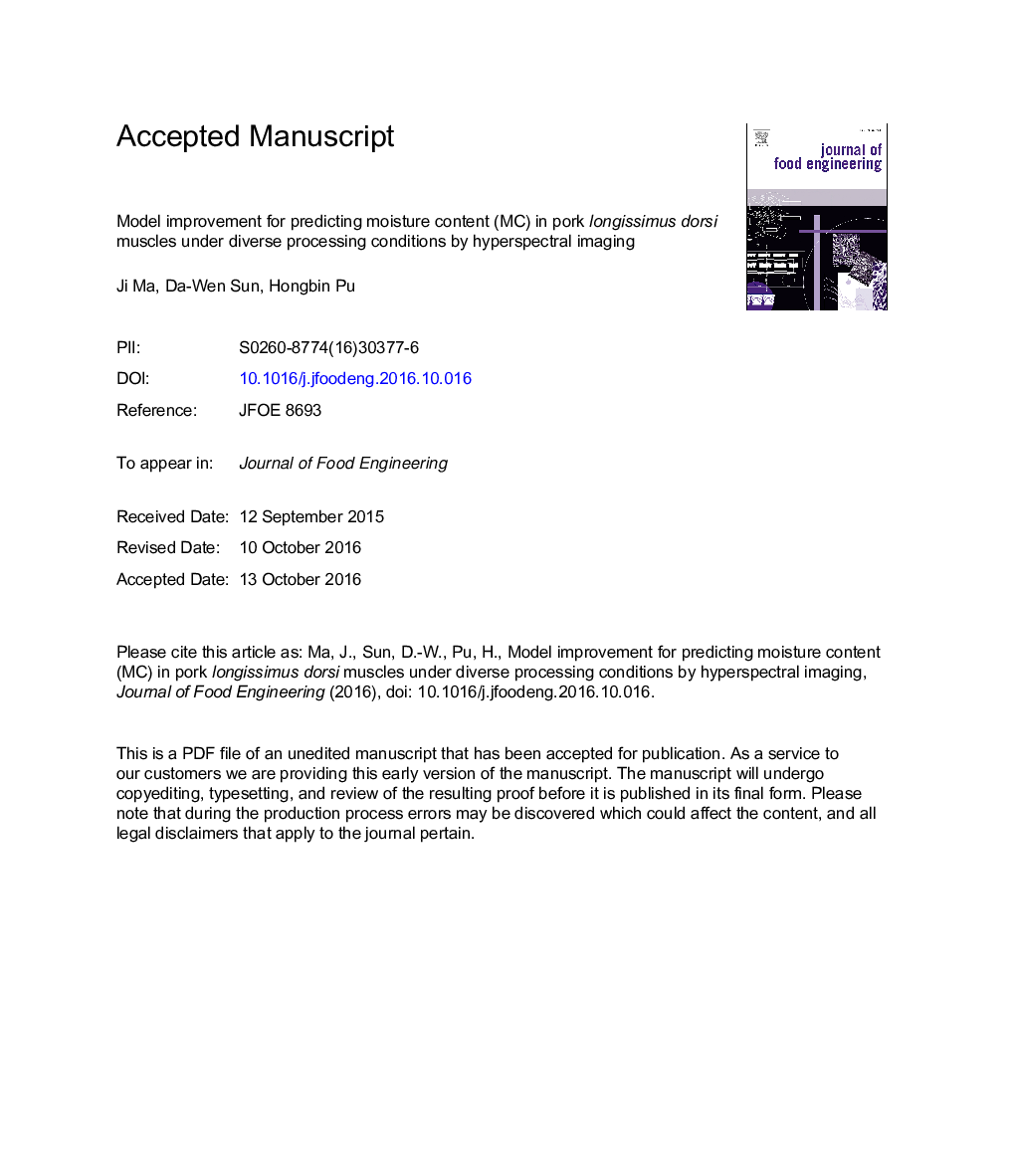| Article ID | Journal | Published Year | Pages | File Type |
|---|---|---|---|---|
| 4909201 | Journal of Food Engineering | 2017 | 25 Pages |
Abstract
This study investigated the feasibility of hyperspectral imaging (HSI) to predict moisture content (MC) values in heated - dehydrated (H-D) and cool - air - dehydrated (C-A-D) pork samples using the calibrated models established based on fresh (F), frozen - thawed (F-T), dry - salting - dehydrated (D-S-D) and wet - salting - dehydrated (W-S-D) pork samples. The full spectra were extracted from the region of interests (ROIs) in the spectral range of 400-1000Â nm and the textural variables were extracted by gray-level gradient co-occurrence matrix (GLGCM) method from the first two PC images accounting for 98.73% of the total variance. Moreover, the optimal wavelengths were selected by regression coefficients (RC). Partial least-squares regression (PLSR) predictive model was developed based on the above extracted data and their mutual combination, in which the changes can be correlated with MC - related attributes. The results demonstrated that the PLSR model based on the incorporation of the optimal wavelengths and the textures (OW-T) from F, F-T, D- S -D and W-S-D samples were the best to predict MC in H-D and C-A-D samples with Rp2 of 0.9489 and RMSEP of 1.4736. Moreover, the generated visualization maps provided a rapid way to screen the MC values unequally distributed in the whole pork samples after diverse processing conditions. Therefore, it is feasible and promising to improve the applicability of the existing MC predictive models for MC prediction in the pork samples by supplementing more samples under different treatments as another prediction sets.
Related Topics
Physical Sciences and Engineering
Chemical Engineering
Chemical Engineering (General)
Authors
Ji Ma, Da-Wen Sun, Hongbin Pu,
